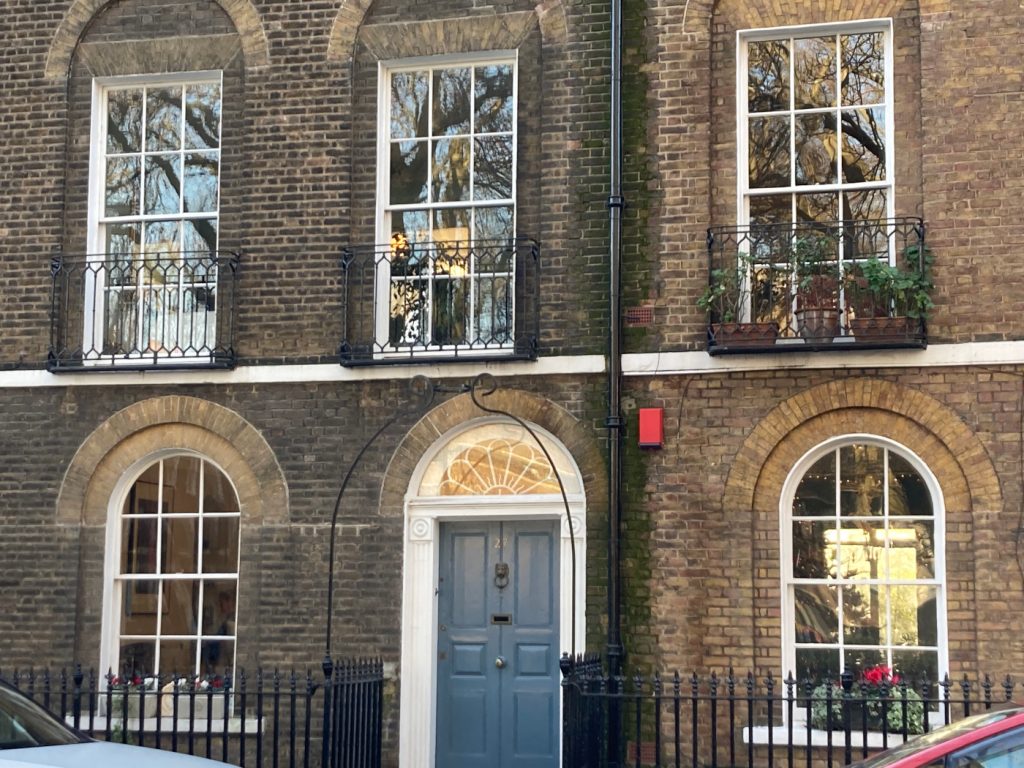Law and Mortar: No.27 Northampton Square
This revived column ( it last ran in 2012!) will feature buildings with legal significance within walking distance of the City Law School campus. Penned by the brilliant Sue Doe, you can look forward to finding out the history of all those places you walk past on your way to classes… First stop is one right on Northampton Square!
James Hook 1787-1850 -and the early days of abolition
Very close by the University’s main building in Northampton Square is a very strong connection to the slave trade and to the abolition of slavery in Britain in the early nineteenth century.
The Act of Parliament abolishing slavery was in many ways just the beginning of the process of removing the world of the appalling trade in people.
At number 27 Northampton Square lived a man called James Hook, and his ever-growing young family. The houses were newly built, and inhabited by the prosperous classes, drawn to an area that was close to both the City of London, the centre of trade, and to Westminster, centre of politics. It was also a place for those who did not follow the established Church of England. James was a draper, a merchant and businessman, but also a Wesleyan (protestant Christianity based on the ministry of Charles and John Wesley). The children of the family were baptised at the Wesleyan Registry in Paternoster Row, near St Pauls Cathedral.

James was certainly here in 1819 when his son, James junior, was born and in 1838, when another son, Henry, was born. By 1841 however, they had moved to Camberwell, perhaps needing more room than the house in Northampton Square could provide – they had at least ten children by now. In 1841 James senior is listed in the census as a merchant, and his son James junior is already listed as an artist. He would go on to be a well-known painter in Victorian London, and was a student at the Royal Academy.
There is no indication that James senior had any legal training. However, as a prosperous businessman his place in society would have meant he was in a good position to become a Justice of the Peace. Barring any other evidence coming to light, this is very likely to be the way he came to be appointed as Judge Arbitrator in Sierra Leone, Africa. As a merchant – presumably trading overseas – he would have a very good knowledge of lines of supply and business practice. This would be needed in trying to stop the trade in slaves.
In 1819 the British had set up a Vice Admiralty Court in Freetown, Sierra Leone, in order to try British subjects caught trading in slaves. In the same city was the Mixed Commission Court, staffed by a British magistrate, a commissary judge and a commissioner of arbitration from each of the nations with which Britain had signed an anti-slavery treaty, such as Spain, Portugal, The Netherlands and Brazil. However, these were constantly changing as treaties were made and subsequently lapsed.
Sierra Leone was not a popular posting due to the prevalence of tropical diseases, so it must have been with some trepidation that James set sail for his posting. The first years of the court were apparently chaotic and corrupt due to the lack of suitably qualified people willing to be posted, but were much improved by the time James was appointed in September 1842 (Edinburgh Gazette, October 7, 1842).
However, it was a difficult job, and success was limited. In 1847, his report to the Prime Minister Lord Palmerston, is downbeat
“..we are led to the conviction that the Slave Trade on this coast has never been more vigorously carried on than at present..”
James died in Sierra Leone in July 1850.
Life long Londoner, Sue worked in the legal profession for decades (libraries, know how, compliance, data protection) after a law degree from the LSE. Now concentrating on local specialist history research (Hackney; women; legal), walks, talks and spreading knowledge. Find her on Instagram.


